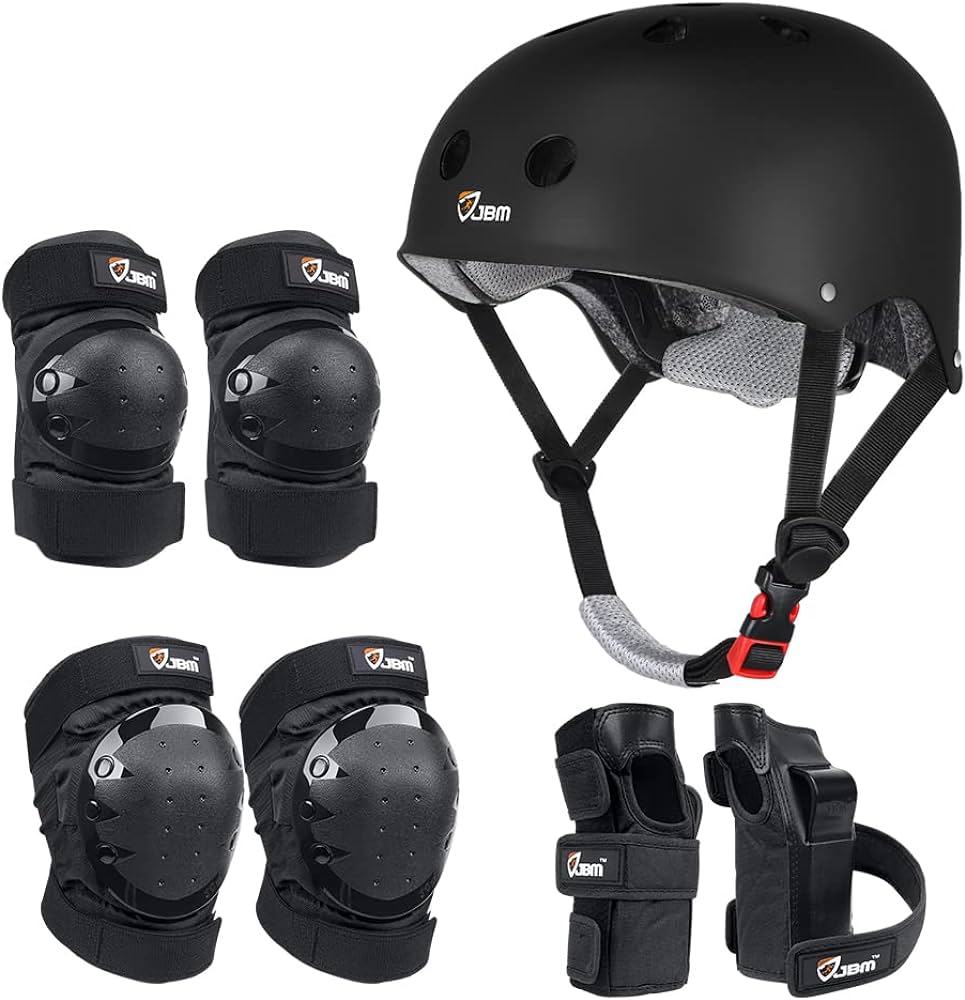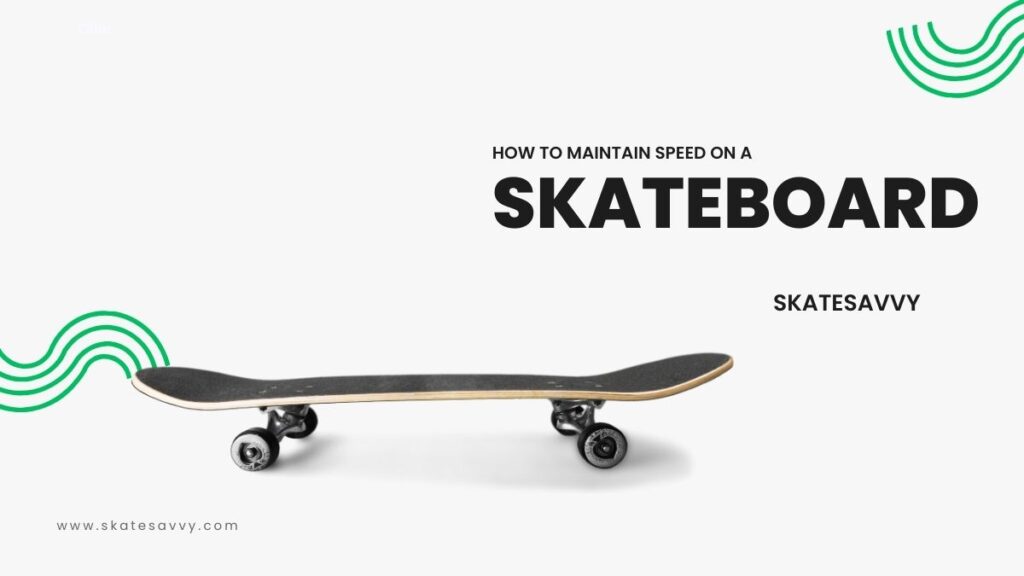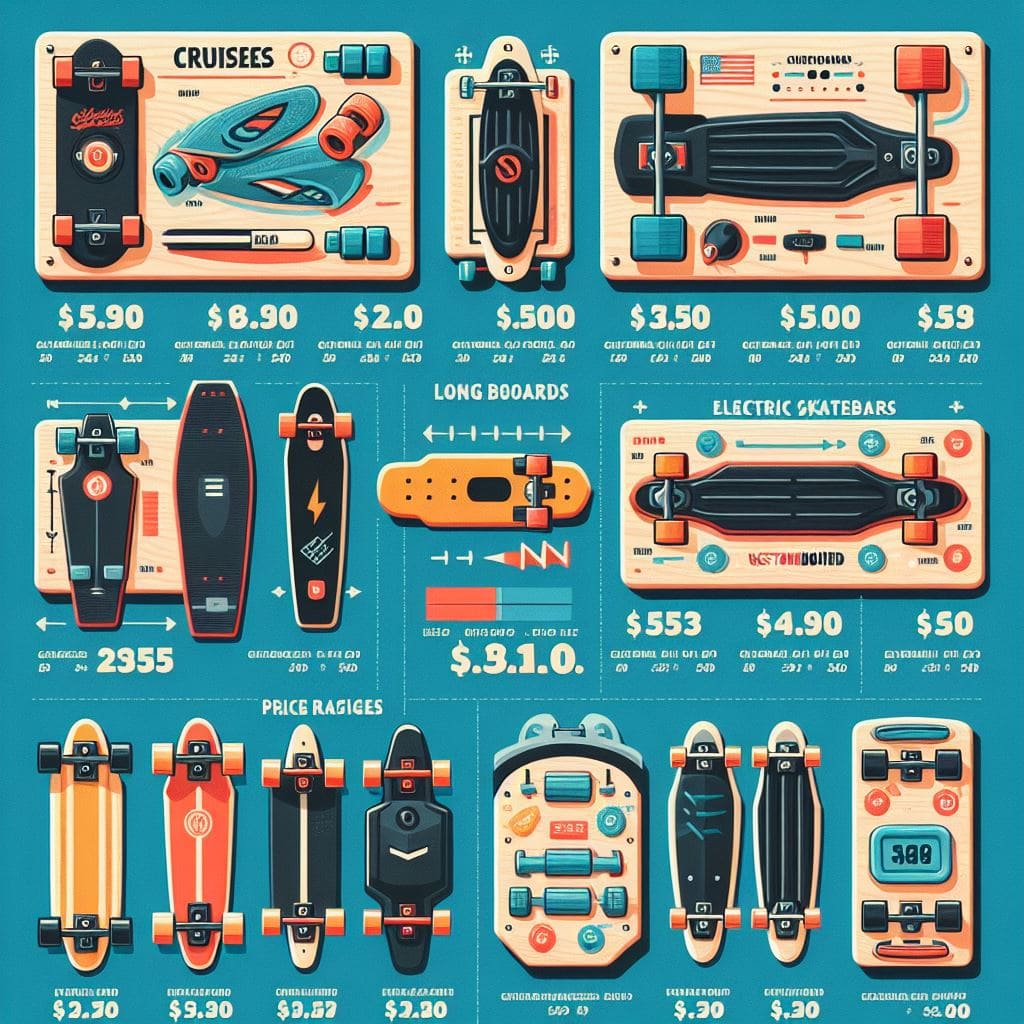How to maintain speed on a skateboard — have you ever pondered this as a rookie skateboarder or someone trying to hone their skills? Many skateboarders overlook the importance of maintaining an even speed, often viewing skateboarding as simply moving and performing tricks. However, maintaining speed on a skateboard plays an integral role in the sport and is often the defining quality between an ordinary and an extraordinary skateboarder. Understanding the physics of inertia and how it applies to skateboarding can greatly enhance your ability to maintain speed.
Imagine yourself effortlessly gliding through the streets or parks, the wind rushing past your face as you smoothly navigate the pavement. This is the exhilarating sensation of skateboarding, a feeling of pure freedom and fluidity. And the secret to this feeling? Maintaining a steady speed. It’s not just about the thrill, it’s about control. A steady speed opens up a world of possibilities, allowing you to execute a wider range of tricks and maneuvers with precision and style. It’s about more than just maintaining speed, it’s about embracing the freedom and thrill that comes with it.
Understanding the Basics of Skateboarding
Before you zip down the street at full speed or master complex tricks, it’s essential to grasp some fundamental aspects of skateboarding. Let’s look at this exciting sport from a perspective that’s beyond just the basics.
Skateboarding is primarily a recreational sport characterized by a unique culture and style. However, at its core, it’s a life-affirming balance of skill, control, and momentum, which leads us to focus on maintaining speed. After all, having speed on a skateboard is about much more than just going fast. The flow, rhythm, and grace you maintain while moving set the stage for every trick and maneuver you aim to perform.
Perhaps one of the first lessons on speed control deals with how you position yourself on the skateboard. Your stance plays a vital role in determining your balance and, hence, your speed. The two typical stances are the regular stance (left foot in front) and the goofy stance (right foot in front). Establishing your comfortable stance is the first step towards mastering skateboard speed.
Next comes your balance and posture. By shifting your weight forward, you can gain speed, and you can slow down by leaning backward. Skateboarding is a whole-body activity, and your entire body should be engaged while skateboarding. Maintaining that uninterrupted momentum is crucial in weight distribution, balance, and posture.
Let’s talk about the importance of pushing. Your speed depends on how you push off the ground. Pushing with your foot involves planting your foot and using your leg strength to propel the skateboard forward. It’s important to remember always to push using your back foot while your front foot holds the board’s direction. The stronger and more controlled your push, the more speed you can generate on your skateboard.
Your board responds to your movement. How you distribute your weight affects your direction. You can turn or carve by simply shifting your weight to your toes or heels. Knowing how to carve is fundamental for maintaining and controlling speed—especially on downhill rolls.
It is also worth noting that your surroundings contribute to your speed. Features like inclines, declines, and flat terrains require unique speed-keeping approaches. For example, flat terrains may require consistent pushing for speed maintenance, while downhill terrains allow you to capitalize on gravity.
Lastly, the skateboard equipment significantly contributes to your speed. The type of skateboard, wheel diameter, truck tightness, and quality of bearings all play essential roles in how speed can be generated and maintained. That said, it also gives us a nice transition towards our next section, where we’ll discuss the right equipment for speed.
To sum up, understanding the fundamentals of skateboarding is the key to achieving and maintaining speed. Remember, it’s a blend of balance and posture, understanding your skateboard and its dynamics, and appreciating the sport and the environment. Correctly utilizing these factors will assist you in mastering how to maintain speed on a skateboard.
The Right Equipment for Speed

Skateboarding is an intricate sport where the smallest adjustments can significantly change your performance, particularly regarding speed. The right equipment can distinguish between a smooth, swift ride and a clunky, slow cruise. Here’s a rundown of what you need to consider:
To start with, the type of skateboard matters a lot. Different skateboards are designed for various styles and types of skating. For speed, longboards are often the first choice. Their larger size and stability make it easier to maintain higher speeds. On the other hand, a cruiser board is great for quick, short trips around town because of its compact size and mobility. Getting the board that fits your style and goals is a surefire way to improve your skateboarding speed.
Next, consider your skateboard’s deck. The deck’s concave, which refers to its curvature from side to side, affects the skateboard’s overall speed. Deeper concaves help in sharp turns and flip but often negatively affect speed. A flat or shallow concave deck is preferred for maintaining a steady speed.
Bearings are another essential factor. Any discussion about maintaining speed on a skateboard wouldn’t be complete without mentioning them. Located inside the wheels, the bearings are what make them spin. Higher-quality bearings typically mean less friction and more speed. Look for a bearing rating of at least ABEC 5 for cruising or as high as ABEC 7 or 9 for more extreme speed.
Then, we have the skateboard wheels. Bigger wheels cover more ground quickly, while smaller ones will make the ride slower. You should also pay attention to the wheel’s durometer. A higher durometer means harder wheels, which are faster on smooth surfaces. However, softer wheels (lower durometer) can offer better grip and smoother rides over rough terrain, even if they may be a little slower.
The trucks, which connect your wheels and bearings to your skateboard deck, also affect your skateboarding speed. Looser trucks make for smoother turns, while tighter trucks are more stable at higher speeds. Balance is key—you want your trucks tight enough for control and stability but loose enough for smooth, responsive turns.
Another aspect to consider is the material of the wheels. Urethane wheels are the most popular because they offer the perfect balance of grip and slide. This balance is crucial in maintaining speed, as excessive grip can slow you down, and too much slide can make control difficult.
Lastly, it would help to consider the conditions in which you’ll be skateboarding. For instance, harder wheels are better suited for smooth, indoor skate parks, while softer wheels will serve you better on rough outdoor surfaces. Adjusting your equipment according to the environment is essential for maintaining consistent speed.
Searching for speed on a skateboard is a search for the right equipment. Each component of your skateboard, from the type of board to the tightness of the trucks, plays a vital role in your ability to generate and maintain speed. Remember, there is no ‘one-size-fits-all’ solution when selecting the right gear for speed. Your riding style, local environment, and personal preference will all help determine what works best for you.
Techniques for Increasing Skateboarding Speed
Learning how to maintain speed on a skateboard is one thing; knowing how to enhance it is another challenge that lures skateboarders. Whether you’re a beginner just starting your journey or an experienced skateboarder looking to upgrade your speed game, understanding and employing certain techniques can make a remarkable difference.
Initially, the way you start can inevitably affect your speed. The stronger and more controlled your push, the faster you’ll go. There are several pushing techniques, but the most common are the regular and mongo push. The regular push involves keeping the front foot on the skateboard while using the back foot to push off the ground. This technique is generally more balanced and stable. In contrast, the mongo push involves keeping the back foot on the skateboard while the front foot pushes off the ground, providing more power but less balance. Try both methods to see what feels more comfortable and which helps you generate more speed.
Next is the power slide technique. It involves quickly shifting your weight, causing the board to slide sideways in a controlled manner. Practicing power slides provides a stylish way to stop, turn, or change direction, trains your balance, and increases your overall capacity for speed.
Experienced skateboarders also use pumping to maintain and increase speed. Pumping involves shifting your body weight and manipulating your skateboard’s angles to create forward momentum without pushing off the ground. This technique requires practiced coordination and timing but can enable you to generate speed efficiently.
Carving is another way to preserve speed, especially when going downhill. By shifting your weight from side to side and making’ S’- shaped moves, you can use the board’s momentum to your advantage. This technique also adds style to your ride while helping you maintain a steady speed.
Another essential technique for increasing speed is using downhill momentum. Navigating downhill terrain at high speed can be thrilling but intimidating for novice skateboarders. However, with practice and sound technique, you can use gravity to your benefit. When going downhill, bend your knees and lower your center of gravity. It will help you maintain balance and control while enabling gravity to increase your speed.
Drafting or slipstreaming is a more advanced but efficient technique. Skateboarders use this technique to decrease wind resistance by riding closely behind another skateboarder or a vehicle (only in safe, approved conditions). It gives you a temporary speed boost but should be employed cautiously and responsibly to avoid accidents.
It’s also vital to remember to stay relaxed while skating. Stiffness can slow you down, so keep your body loose and fluid. With relaxation comes more excellent control and the possibility of more speed.
In conclusion, increasing your skateboard’s speed comes down to understanding your board, working with gravity, and employing effective techniques. Don’t expect to master these techniques instantly. Instead, practice regularly and be patient; your desired speed will come with time.
Safety Measures while Speeding
For those passionate about learning how to maintain speed on a skateboard, it’s equally important to keep safety at the forefront. Skateboarding at high speeds can be risky if safety precautions are ignored. Here’s how to ensure a safe ride without compromising your speed.
First and foremost, no matter your skill level, wearing the right protective gear should never be optional. This includes helmets, elbow pads, knee pads, and wrist guards. The helmet is an essential piece of gear, especially when cruising at high speeds. A decent-quality helmet can significantly minimize the risk of head injuries in a fall or collision.
Wrist guards, elbow pads, and knee pads are also critically important. They protect these joints and can prevent painful road rash. Remember their value! Also, consider padded skateboarding shorts or trousers, which can protect your hips, tailbone, and thighs if you take a tumble.
If you plan on achieving high speeds, sliding gloves can also be handy, allowing you to perform a hands-down slide in emergencies without the risk of skin burns. The more protected you are, the more confident you’ll be in pushing your limits.
Visibility is essential for skateboarding safety. If you’re skating at dusk or dawn, motorists, pedestrians, and other skateboarders must be able to see you. Always wear reflective clothing or use lights and reflective tape on your skateboard to increase visibility.
Maintaining your skateboard isn’t just about performance – it’s also a safety concern. Before you hit the roads, always check your skateboard for signs of wear and tear. Ensure the nuts and bolts holding the trucks are tight and your wheels rotate smoothly. Also, see if your deck has any serious cracks that could affect stability.
Understanding skateboarding etiquette makes your rides safer. Respect pedestrians’ right of way, and be aware of local traffic laws. Be courteous to cyclists and other skateboarders, and always leave plenty of room for them.
Riding within your skill level is of paramount importance. Mastery of speed comes with practice and experience. Start slowly, gradually build up your speed over time, and only go as fast as your ability to control your skateboard.
Lastly, learning how to fall safely is crucial for skateboarding safety, especially when dealing with higher speeds. Instead of reaching out with your hands, which could lead to wrist injuries, it’s recommended to try to roll through the fall, distributing the impact over a larger area of your body. Practicing this technique significantly reduces the risk of serious injury.
Safety should be your top priority when maintaining speed on a skateboard. No matter how experienced you are, wearing protective gear, regular equipment checks, riding responsibly, and knowing how to fall safely are all essential tenets of skateboarding safety.
Practice Tips for Maintaining Speed
We’ve covered a lot in our discussion on maintaining speed on a skateboard, from understanding the importance of the right equipment to ensuring safety while speed skateboarding. But as the classic saying goes, “Practice makes perfect.” In this concluding section, we will share tips to help you put into practice what we have discussed and improve your speed maintenance capabilities.
While practicing, it’s vital to maintain correct body posture. Keep your body relaxed, with knees slightly bent. Your foot placement on the skateboard should typically be perpendicular to the direction of movement for ample control. This stable pending stance not only keeps you ready for pushing off but also enhances balance—a significant factor in speed maintenance.
Remember to listen to your body while practicing. It’s easy to get caught up in the thrill and forget to take breaks. Look for signs like excessive fatigue, dizziness, or lack of focus, as an exhausted body can lead to mishaps. Remember to hydrate and rest at regular intervals for a swift recovery.
Devote time to enhancing your pushing technique. As discussed earlier, your push-off can greatly influence your initial speed. Try experimenting with various grips and stances to generate more power when pushing off.
It might be tempting to practice on downhill slopes for faster results, but starting on flat, even ground is advisable. Practicing your techniques on a flat surface will help you master control and balance without the added challenge of gravitational pull. Once comfortable maintaining speed on flat surfaces, proceed to gentle slopes.
Invest time in refining your carving. It looks impressive and helps maintain speed as you harness the momentum from side to side. Practice carving on both your toeside and heelside to become a more versatile rider.
Fields and parking lots are perfect places to practice speed maintenance because they offer room. Spaces like these allow you to ride along uninterrupted, focusing on your horizons and giving you the space to practice numerous techniques. Be sure to check local laws and permissions before practicing in these areas.
Remember, the goal is to gain control over your speed and not merely to go fast. Learning to manage your speed in varying conditions and situations is essential. This mastery over control will feed into your confidence, which in turn will help you maintain higher speeds successfully.
Lastly, take your time with the process. Remember that everyone learns at their own pace. Do not compare your progress with others. Focus on getting better each day.
In conclusion, improving your ability and knowledge of maintaining speed on a skateboard is a journey that involves careful selection of the right gear, learning and mastering techniques, practicing with safety in mind, and constant patience. Keep practicing, challenge yourself, and, most importantly, enjoy the ride.
The bottom line
Skateboarding is not just a sport or a mode of transport; it’s a lifestyle. One of the captivating aspects of this lifestyle is the ability to control and maintain speed on a skateboard. The journey towards mastering this skill is marked with its challenges and thrills, posing an exterior and an interior metamorphosis. It builds not only muscle but also character, perseverance, and resilience.
You probably started your skateboarding journey by staying on the board without hitting the ground. As you graduate, the desire to go faster becomes a temptation. But speed without control can lead to dire consequences. Thus, the ability to control and maintain speed is a quintessential part of the skateboarding journey.
Understanding your skateboard’s dynamics is foundational to learning how to maintain speed. Every component of the board—from the deck to the wheels—has a role in speed control. In this article, we explored how different techniques like effective pushing, power sliding, pumping, carving, using downhill momentum, and slipstreaming can influence your skateboard’s speed.
Our journey also explored the importance of safety in speed skating. Since skateboarding is an outdoor activity, several factors are involved. Wear and tear on your skateboard, visibility measures, understanding skateboarding ethics, and respect for designated skateboarding areas are among a few things that entail skateboarding safety.
Speed without safety can have serious repercussions. Therefore, protective gear like helmets, wrist guards, knee pads, and elbow pads should be integral to your skateboarding routine. Respect for safety measures should always be paramount regardless of your proficiency level.
The art of maintaining speed is like a dance. It takes practice, precision, balance, and rhythm. You must understand your body’s limitations, work with it, and finally, see it all come together in a harmonious ballet on a skateboard.
The most important thing to remember is to enjoy the journey of learning and improving. Everyone learns and progresses at their own pace. So please do not rush the process, or you’ll miss the learning it brings. Besides, you’re carving out a unique story of resilience and determination with every fall, scrape, and triumphant rise.
Ultimately, maintaining speed is only one part of the skateboarding journey. Still, it’s a part that enables you to feel the freedom, exhilaration, and, ultimately, the essence of skateboarding. It’s never about how fast you go but how much control you have as you’re going fast. Keeping this in mind, we finish our tour of maintaining speed on a skateboard.
Thank you, we have finished the article. Remember, skateboarding isn’t just about the thrill of speed. It’s also about the thrill of control, mastery, and personal growth. So ride on, explore, and conquer.


